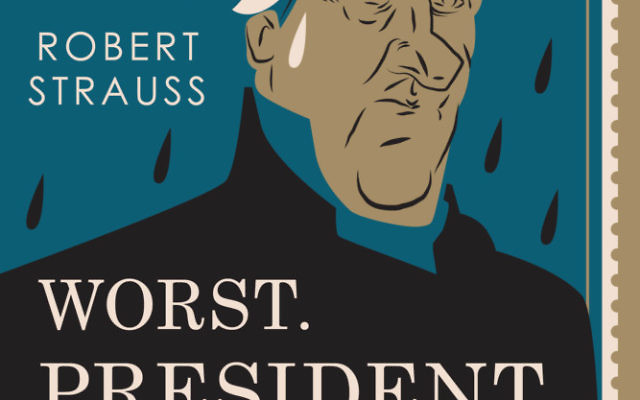James Buchanan? #Fail
By Joe Sterling
Ranking presidents is one of America’s favorite parlor games, and we all have our own personal lists.
Our favorites are eligible for sainthood, many are just plain old mediocrities, and the worst of them are destined to be eternal piñatas. Some make our best/worst lists even before they get elected.
Robert Strauss’ enjoyable page-turner, “Worst. President. Ever.,” makes the case that James Buchanan, our 15th president, who served from 1857 to 1861, was the worst commander in chief.
Buchanan toiled in law and politics and diplomacy for decades, with modest strides here and there. Then he assumed the presidency and proved to be the “W.P.E.”
This plodding “doughface,” the term for Northerners who sympathized with the South over slavery, waffled and dithered as our country hurtled toward its Worst. Crisis. Ever: the Civil War.
Normally, a history about one of the lesser-known presidents, bookended by Franklin Pierce and Abraham Lincoln, isn’t going to be on your nightstand or bookmarked on your iPad. But Buchanan’s lowlights? The SMH moments rouse you from nodding off:
- “His backroom deal to influence the Supreme Court to make the Dred Scott decision.” That sealed the division of the Union.
- “He equivocated back and forth over what the disposition of slavery in Kansas would be.” This paved the way for John Brown’s insurrection at Harpers Ferry, Va.
- He “presided over the Panic of 1857” and “decided to do nothing to have the government mitigate the crisis.”
Strauss intersperses the story of Buchanan with his insights on presidential rankings and descriptions of his own family’s historical obsessions. He explores the speculation that Buchanan, a bachelor, might have been gay, a separate parlor game altogether.
One takeaway from this book is that it might be too soon to rank our most recent presidents, Barack Obama and George W. Bush.
As time goes on, perspective will become clearer. Take the yin-and-yang presidencies of Richard Nixon and Jimmy Carter. Triumphs and setbacks.
One local anecdote: The book recounts how historian Julian Zelizer was doing research at the Carter Presidential Library. In a cafeteria line, he turned around, and there was Jimmy Carter.
Zelizer, Strauss says, clearly thinks Carter is a “mensch.”
“He sat at one of the little round tables bothering no one, as humble as you can imagine,” Zelizer said. “That captured what Jimmy Carter was.”
“Which was clearly not,” the author says in his amusing style, “the notorious W.P.E.”





comments